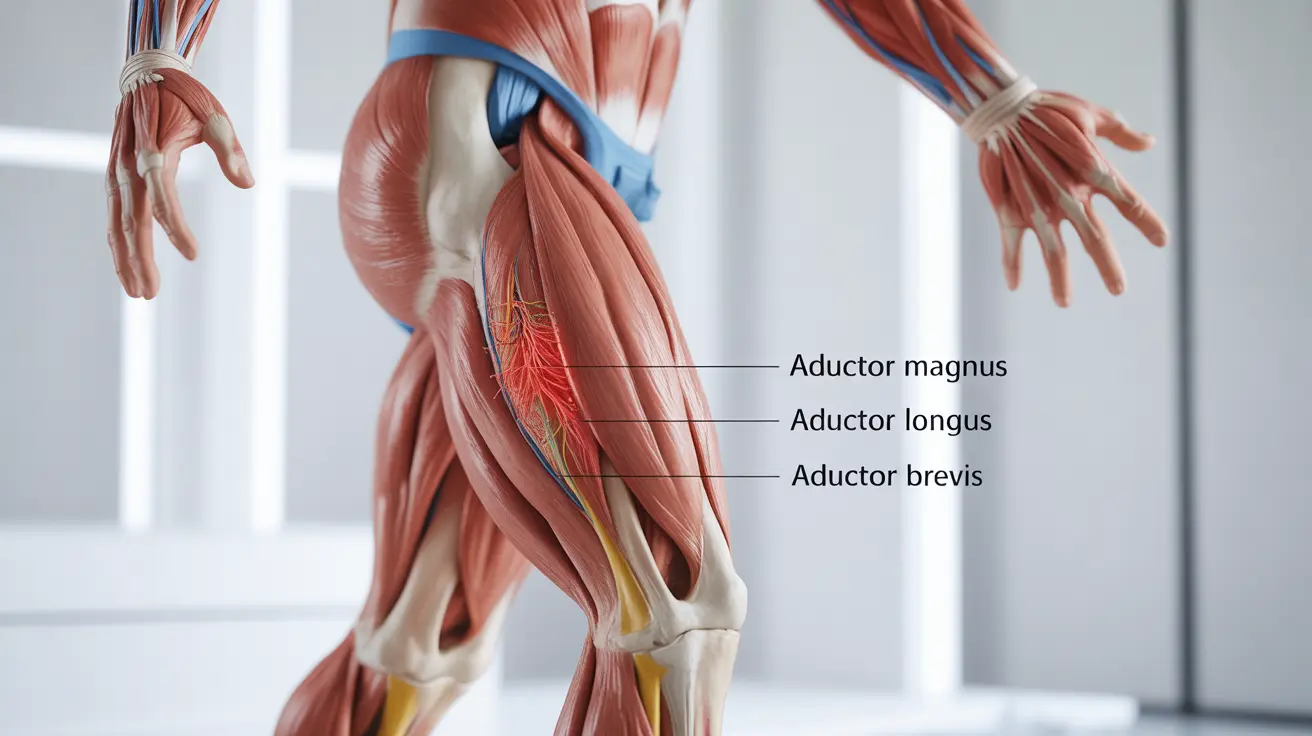Upper inner thigh pain in women can be a concerning and uncomfortable condition that affects daily activities and quality of life. This comprehensive guide explores the various causes, treatment options, and preventive measures specifically related to female upper inner thigh pain, helping you understand when to seek medical attention and how to manage symptoms effectively.
Common Causes of Upper Inner Thigh Pain in Women
Female upper inner thigh pain can stem from several distinct sources, each requiring different approaches to treatment and management:
Muscle-Related Causes
The most frequent source of upper inner thigh pain in women includes:
- Adductor muscle strain
- Overuse injuries from exercise
- Sports-related injuries
- Poor posture or biomechanics
Nerve-Related Issues
Nerve compression or irritation can cause significant discomfort in the upper inner thigh area:
- Obturator nerve entrapment
- Femoral nerve compression
- Sciatica affecting the upper thigh
Pregnancy-Related Causes
During pregnancy, women may experience upper inner thigh pain due to:
- Ligament stretching
- Weight gain pressure
- Postural changes
- Pelvic floor issues
Diagnosis and Treatment Options
Professional Assessment
When experiencing persistent upper inner thigh pain, women should seek medical evaluation to determine the exact cause. Healthcare providers may perform:
- Physical examination
- Range of motion tests
- Imaging studies (if necessary)
- Nerve conduction studies
Treatment Approaches
Treatment options vary depending on the underlying cause and may include:
- Rest and activity modification
- Physical therapy
- Anti-inflammatory medications
- Hot or cold therapy
- Specialized exercises
Prevention and Self-Care Strategies
Preventing upper inner thigh pain involves several key strategies:
Exercise and Stretching
- Regular stretching routines
- Proper warm-up before activities
- Gradual increase in exercise intensity
- Core strengthening exercises
Lifestyle Modifications
Making certain lifestyle changes can help prevent or reduce pain:
- Maintaining good posture
- Wearing appropriate footwear
- Using proper body mechanics
- Regular exercise within limits
Pregnancy-Specific Considerations
Pregnant women should take special precautions to manage upper inner thigh pain:
- Gentle prenatal exercises
- Proper support garments
- Regular rest periods
- Pelvic floor exercises
- Working with a prenatal physical therapist
When to Seek Medical Help
Consult a healthcare provider if you experience:
- Severe or persistent pain
- Numbness or tingling
- Difficulty walking
- Pain accompanied by swelling
- Signs of infection
Frequently Asked Questions
What are the common causes of upper inner thigh pain in women?
The most common causes include muscle strain, nerve compression, pregnancy-related changes, overuse injuries, and poor posture. Each cause may require different treatment approaches and should be properly diagnosed by a healthcare provider.
How do I treat and manage muscle strain in the upper inner thigh?
Treatment typically involves rest, ice therapy for acute pain, gentle stretching exercises, and gradual return to activity. Physical therapy may be recommended for proper rehabilitation and prevention of future injuries.
Can nerve compression or hernias cause upper inner thigh pain in females?
Yes, nerve compression, particularly of the obturator or femoral nerves, can cause upper inner thigh pain. Hernias may also present with pain in this area and require medical evaluation for proper diagnosis and treatment.
What are some exercises or stretches that can help alleviate upper inner thigh pain?
Beneficial exercises include gentle adductor stretches, hip flexor stretches, and controlled strengthening exercises. However, these should be performed under proper guidance to avoid aggravating the condition.
How can I prevent upper inner thigh pain during or after pregnancy?
Prevention during pregnancy includes maintaining good posture, performing approved prenatal exercises, wearing supportive garments, and working with a prenatal physical therapist. Regular pelvic floor exercises and proper rest are also essential.




